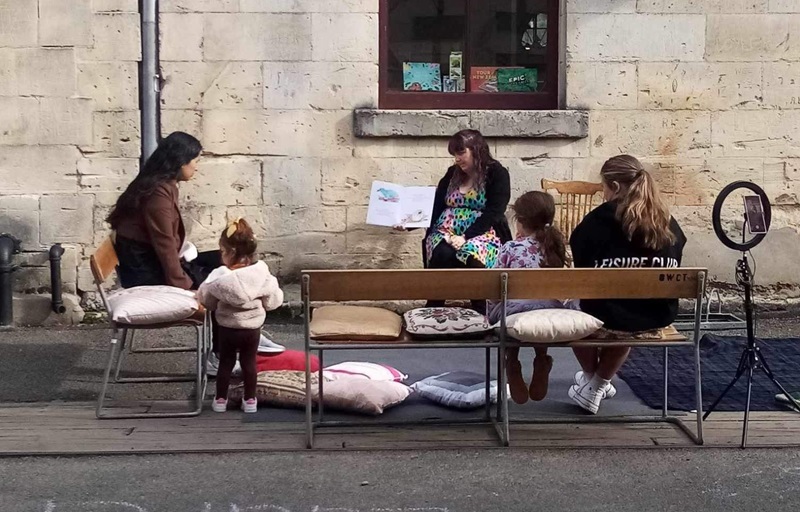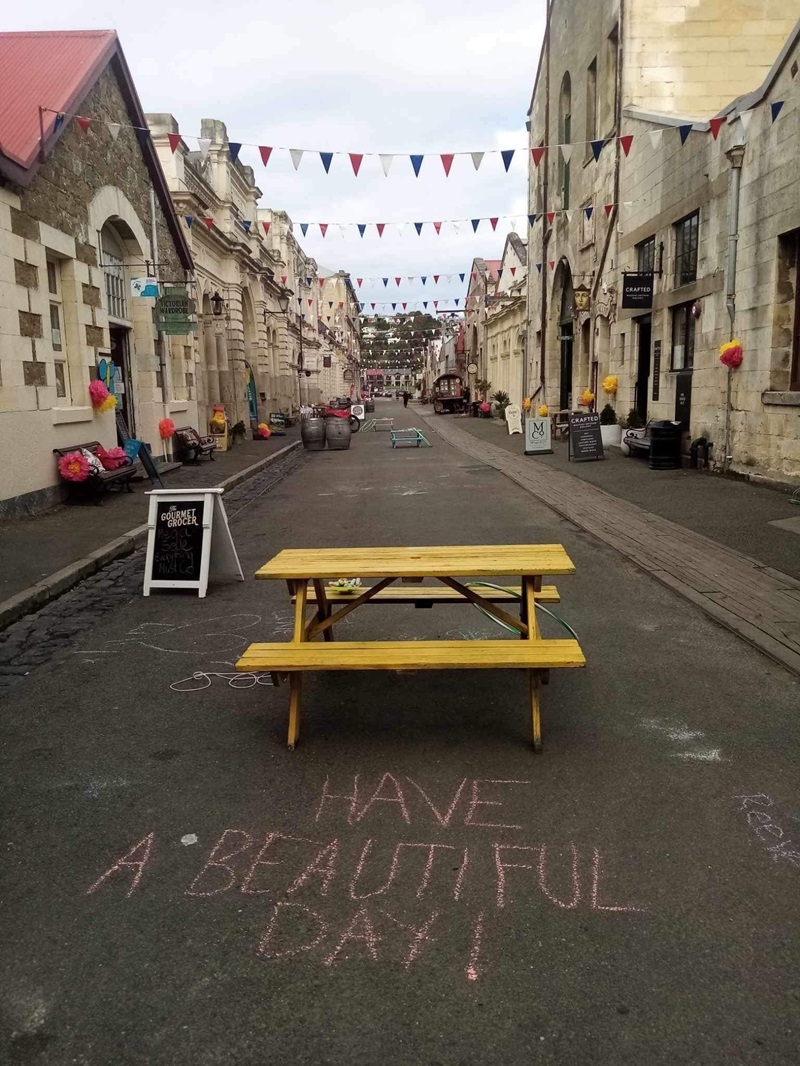Pedestrianisation showed 'street for what it could be'
Ashley Smyth
21 May 2024, 9:26 PM
 There has been a positive response from the public following a trial closure of Harbour Street to traffic. Photo: Supplied
There has been a positive response from the public following a trial closure of Harbour Street to traffic. Photo: SuppliedThe positive public response to the Harbour Street trial closure in April is encouraging for those who hope it could become more permanent.
The trial ran across the two weeks of the April school holidays. Ōamaru’s Harbour Street was open to traffic as usual for the first week, and pedestrianised the second week.
Businesses monitored how they were affected across the two weeks.
Stacey Pine, one of the key proponents of the trial, says it shows the potential for the street.
“It was really cool, just to see the life on the streets . . . People enjoying the street for what it could be.
“Highlights for me were seeing wheelchairs and walking frames on the street, and there were kids pulling out skipping ropes and doing Double Dutch.
“Every day we would put different things on the street just to see how people interacted with them, and it was so lovely to see people spending time on the street.”
She was pleasantly surprised the public response was so positive, knowing that often people can be resistant to change.
A poll on Waitaki District Council’s Facebook page asking people to click a “caring” emoji if they are for the closure, and an “angry face” if they are against, has 196 for and 4 against. There are also 25 “thumbs up” and 3 “heart” emojis, which also indicates support for the closure.
“To have, like, 95 percent positive responses from the public was really cool,” Stacey says.

Storytime was held on Harbour Street during its trial pedestrianisation in April. Photo: Supplied
There are, however, one or two businesses still concerned with a drop in sales, especially in the hospitality industry.
“Early morning people want, you know, your quick coffee on the way to work.
“The truth, if we measure the steps, is that it's not any further to walk if you park behind the hospitality businesses, and yet in people's heads they hear the street is closed so they choose somewhere else to go.
“So I'm quite interested in the prospect of habit change and what it means, what it takes to change people's habits, and is there anything we can do to help the habit change factor to keep people attending the businesses, if we decide to pedestrianise the street?
“So we don't have all the answers because we don't want to be affecting people's businesses in a negative way, especially in the current climate.”
The plan for now is to have “everyone survive the winter” and potentially have a meeting of businesses heading into spring, to see if there is a way to make everybody happy.
“The grand dream would be a summer holiday closure over school holidays, but obviously that's not something that's set, or that we're definitely doing.”
More than 75 percent of businesses are keen to see the street closed, but the majority are “very reluctant” to go ahead unless 100 percent are on board, Stacey says.
A council spokesperson said the trial was a community-led initiative, but any next steps need to take into account the range of views of businesses and the community.

Pedestrianising a street is not an idea unique to Ōamaru, and is happening in Arrowtown, Queenstown and Dunedin, for example.
In Nelson, part of Trafalgar Street, in the city centre was pedestrianised for three summer periods, Stacey says.
“And then after the third summer, people were like, 'can we just close it all the time?' Because obviously they get to that stage of habit change where they've learned where else they can park easily and still come to the street,” Stacey says.
“They see the benefits . . . and people still come to the streets and they come to all their favourite businesses.
“They enjoy the street as a place, and they might actually, instead of just driving to one business and leaving, they might wander from shop to shop.”
From Stacey’s experience running her business, The Movement Hub, summer is the most “chaotic” and “dangerous” time on the street.
“There was a mad amount of people on the street [last summer] and to have cars on both sides, chock-a-block.
“So I think summer would be an ideal time because I think businesses are going to be crazy no matter what.”
Other feedback is people wanted to see more activity happening on the street, but businesses aren’t prepared to invest in that sort of thing for a one-week trial.
“Businesses aren't going to apply for their licence to extend to the street unless it's long-term, because they have to pay extra money for that. So, that's all stuff that would come, you know, with pedestrianising.
“Which, potentially, if we did summer, we could work with the council to get that happening . . . because that would be lovely.”
Solutions need to be found to keep locals coming to get their 8am coffee, so they don’t find somewhere else to go, Stacey says. Some more obvious signage pointing to parking behind the street is one idea.
NEWS
WHAT'S ON GUIDE




